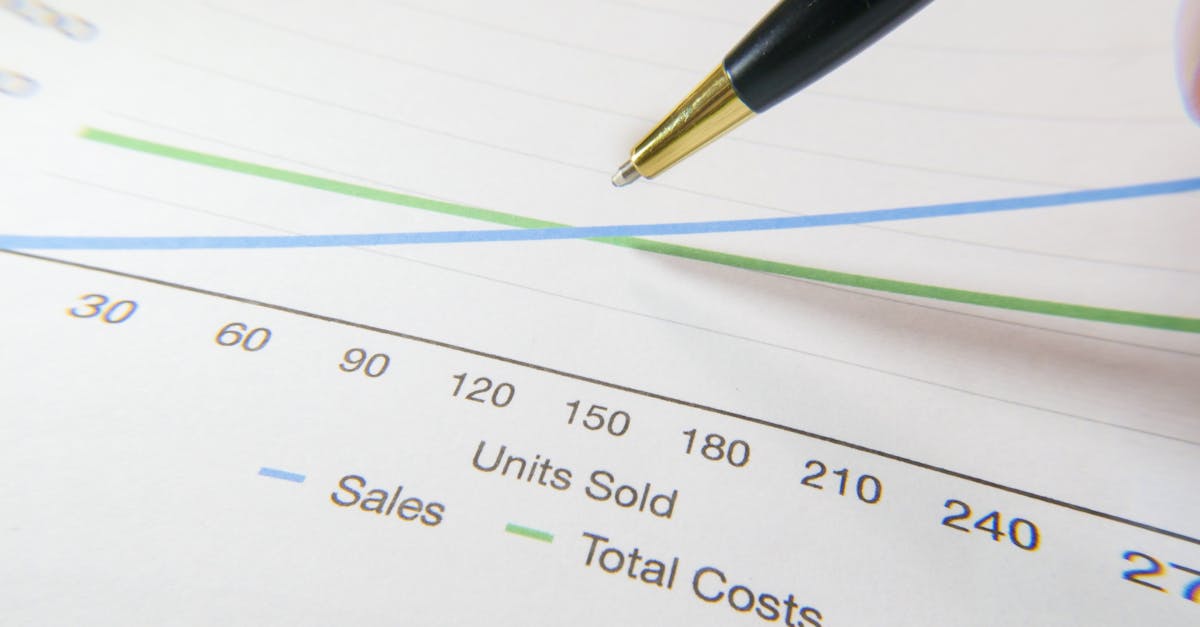Key Takeaways
- BPA enhances sales forecasting accuracy by automating repetitive tasks, reducing human error, and leveraging data-driven insights.
- Automation saves time and boosts efficiency, enabling businesses to focus on strategic goals rather than manual processes.
- Integrating BPA with tools like CRM systems ensures real-time updates and seamless data collection for more reliable forecasts.
- Predictive analytics powered by BPA uses historical data and market trends to create dynamic, adaptable forecasting models.
- Best practices include selecting the right tools, providing team training, and continuously monitoring automated processes for optimization.
Sales forecasting can make or break a business. Yet, according to recent studies, nearly 68% of companies struggle with inaccurate forecasts, leading to missed revenue opportunities and poor decision-making. It's clear that relying on manual processes or outdated methods just isn't cutting it anymore.
That's where Business Process Automation (BPA) comes in. By automating repetitive tasks and leveraging data-driven insights, BPA not only streamlines the forecasting process but also significantly improves its precision. Imagine having forecasts you can trust—ones that empower us to plan smarter and stay ahead in competitive markets.
Understanding BPA And Its Role In Sales Forecasting
Business Process Automation (BPA) transforms how organizations handle sales forecasting by automating repetitive tasks and improving data accuracy. Incorporating BPA reduces human error, enhances efficiency, and enables teams to focus on strategic goals.
What Is BPA?
BPA refers to the use of technology to automate repetitive processes that were traditionally manual. By employing software tools, businesses streamline workflows, reduce errors, and improve operational efficiency. In sales forecasting, BPA leverages advanced algorithms and real-time data integration to generate precise predictions.
For example, instead of manually compiling spreadsheets from multiple sources, a BPA system automatically gathers data from CRM platforms like Field Service CRM or service industry software solutions. It then analyzes trends and generates actionable insights with minimal human intervention. This automation not only saves time but also delivers more consistent results.
Additionally, mobile workforce management tools can integrate with BPA systems to share real-time updates about field operations. These integrations help align sales forecasts with actual business activities happening on the ground. Businesses aiming for better decision-making rely heavily on such technologies for accurate projections.
Key Benefits Of BPA In Business Operations
Using BPA brings significant advantages across business operations by eliminating inefficiencies and boosting productivity.
- Improved Accuracy
Automation minimizes manual entry errors in critical areas like sales forecasting or technician route optimization. For instance, job scheduling software for technicians ensures accurate resource allocation directly impacting forecast reliability.
- Time Efficiency
Tools such as service dispatch software save hours by automating task assignments and monitoring progress in real time—whether it's managing routes or scheduling field visits.
- Scalability
As businesses grow, automated systems adapt effortlessly without requiring proportional increases in manpower or manual effort—a key feature for those using technician management software or mobile field service apps.
- Enhanced Data Utilization
With integrated solutions like Field Service CRM combining customer engagement data with operational metrics, companies make smarter decisions backed by comprehensive insights rather than fragmented information streams.
By adopting automated field service solutions alongside BPA strategies within their operations framework, companies achieve higher levels of consistency while staying ahead in competitive markets focused on precision-driven outcomes like sales forecasts refinement.
Challenges In Traditional Sales Forecasting
Traditional sales forecasting often struggles due to outdated methods and inefficiencies, which can hinder overall business performance.
Lack of Accuracy in Predictions
Errors in predictions frequently arise from unreliable or incomplete data. Historical data, when inaccurate or unavailable, creates gaps that weaken forecasting models. External influences like market trends, economic shifts, and competitor strategies are often ignored by traditional methods. For example, failing to account for a sudden market downturn or a competitor's aggressive pricing strategy can lead to significant forecast deviations.
The process also lacks adaptability. Manual approaches struggle to incorporate real-time data from tools like Customer Relationship Management (CRM) systems or Mobile Workforce Management platforms. As a result, forecasts may not reflect current business dynamics accurately.
Time-Consuming Manual Processes
Manual processes demand considerable time and effort yet remain prone to errors. Consolidating spreadsheets, cross-referencing numbers, and manually inputting data consume resources that could be better allocated elsewhere. A single error during these activities can ripple through the entire forecast.
These methods also limit scalability as businesses expand operations. Without automation via BPA technologies such as Field Service CRM integrations or Technician Scheduling Tools, teams face increased workloads without proportional efficiency gains. Automating repetitive tasks like data aggregation saves time while reducing human error.
Incorporating advanced solutions streamlines workflows and allows teams to focus on strategic decisions rather than tedious manual tasks that slow progress and compromise accuracy.
How BPA Automates Sales Forecasting
Business Process Automation (BPA) transforms sales forecasting by leveraging technology to achieve precision and efficiency. It eliminates manual tasks, reduces errors, and integrates real-time data for actionable insights.
Streamlining Data Collection And Analysis
BPA simplifies gathering and analyzing diverse datasets essential for accurate forecasts. Automated tools collect data from historical sales records, market trends, economic indicators, and even social media sentiment. For instance, cognitive bots scan vast amounts of information at high speed while minimizing human error.
Preprocessing is another critical step where BPA shines. It cleanses raw data by addressing outliers, standardizing formats, and correcting inconsistencies. Clean data leads to reliable forecasts that businesses can confidently rely on for decision-making.
Integration With Existing Tools And Platforms
BPA connects seamlessly with existing software ecosystems like CRM systems or mobile workforce management tools. These integrations mean sales teams access current customer engagement metrics alongside operational performance in one system.
For example, connecting BPA with technician scheduling tools allows companies to align service operations with expected demand patterns. Similarly, Field Service CRM integration lets businesses use combined customer interaction histories and field activity logs to refine future predictions.
This interconnected approach makes each tool more valuable as part of a synchronized workflow rather than isolated systems working independently.
Real-Time Forecast Adjustments
Automated processes equipped with BPA adapt instantly when new variables arise. Real-time updates from route management software or mobile workforce platforms reflect actual business activities directly into forecast models without delays.
Improving Forecast Accuracy With BPA
Business Process Automation (BPA) transforms sales forecasting by streamlining processes and increasing accuracy. By automating repetitive tasks and leveraging data insights, businesses can achieve reliable forecasts critical for strategic decisions.
Leveraging Historical Data And Trends
Historical data provides a solid foundation for accurate forecasts. Analyzing past sales figures helps identify growth rates, seasonal trends, and recurring patterns. For instance, comparing year-over-year sales growth can reveal percentage increases that guide future predictions.
BPA simplifies this process by automating the collection and analysis of historical data. It eliminates manual errors while saving time. Automated tools sift through large datasets to uncover actionable insights without human intervention. For example, field service automation tools linked to CRM systems can track customer engagement over time, aligning historical patterns with current business metrics.
This approach also supports long-term planning. Businesses gain clarity on budgeting needs and performance benchmarks by continuously analyzing aggregated historical records.
Reducing Human Errors Through Automation
Manual forecasting methods often lead to inaccuracies due to human error or incomplete data inputs. BPA addresses these issues by automating repetitive tasks like data entry and report generation. This reduces the risk of mistakes caused by oversight or fatigue.
Integrated systems like mobile workforce management platforms streamline workflows further by automatically syncing real-time operational updates into forecast models. For example, technician scheduling tools tied to job scheduling software ensure consistent updates across departments without delays.
Automation also frees teams from tedious administrative work, allowing them to focus on strategic activities that improve overall efficiency while enhancing forecast reliability.
Enhancing Decision-Making With Predictive Analytics
Predictive analytics powered by BPA delivers deeper insights into future trends based on existing datasets. By combining historical sales records with external factors like market conditions or customer behavior metrics from service business software solutions, businesses create more dynamic forecasts.
These predictive models adapt quickly as new variables emerge in real-time scenarios—for instance, changes in customer demand captured via a field service CRM system instantly update projections for better decision-making on resource allocation or inventory management.
Such integration enhances agility in responding to market fluctuations while enabling informed strategies rooted in comprehensive analytics rather than guesswork alone.
Best Practices For Implementing BPA In Sales Forecasting
Automating sales forecasting with Business Process Automation (BPA) transforms accuracy and efficiency. Following best practices enhances these benefits.
Choosing The Right BPA Tools
Selecting suitable tools depends on business needs. Look for tools that integrate seamlessly with your existing systems, such as CRM platforms or mobile workforce management software. For instance, if gathering real-time customer engagement data is a priority, choose BPA solutions compatible with Field Service CRM or Mobile Workforce Management systems.
Prioritize features like automated data collection, predictive analytics, and multi-source integration. Tools offering real-time forecast updates allow immediate adjustments to reflect current sales trends. Evaluate options based on scalability to support business growth without requiring significant manual intervention.
Focus on vendors known for reliability and user-friendly interfaces. By choosing robust solutions tailored to automate processes like technician scheduling or route optimization in service-based industries, businesses can achieve greater precision in forecasts while streamlining operations.
Training Teams For Effective Implementation
Training equips teams to use BPA tools effectively. Start by familiarizing employees with the new system's functionalities through hands-on workshops or guided onboarding sessions.
Encourage collaboration between IT and sales departments during training phases. Sales teams provide insights into market dynamics while IT ensures smooth technical implementation. This joint effort maximizes tool usage by combining expertise from both sides.
Offer ongoing resources like troubleshooting guides or periodic refresher courses so users stay updated on new features. Engaging the team fosters confidence in leveraging automation for improved forecasting accuracy while reinforcing commitment to shared goals.
Monitoring And Refining Automated Processes
Regular monitoring maintains forecast accuracy over time. Set up weekly reviews of automated processes to identify inconsistencies or areas needing adjustment as sales datasets evolve.
Refine algorithms using feedback loops from recent performance metrics and pipeline changes—this keeps models aligned with current realities instead of relying solely on static historical patterns. Incorporate team input about unexpected market shifts for added context during tweaks.
Conclusion
Adopting BPA for sales forecasting empowers businesses to overcome traditional inefficiencies and embrace precision-driven strategies. By automating repetitive tasks and leveraging real-time data, we can enhance accuracy, save time, and focus on achieving strategic goals.
BPA not only streamlines workflows but also integrates seamlessly with existing tools, enabling us to make informed decisions backed by reliable insights. As markets evolve rapidly, staying competitive requires dynamic solutions like BPA to ensure our forecasts align with current realities.
With the right approach and tools in place, we can unlock new levels of efficiency and consistency that drive sustainable growth and success.
Frequently Asked Questions
What is sales forecasting, and why is it important for businesses?
Sales forecasting predicts future sales based on historical data and market trends. It’s crucial because accurate forecasts help businesses plan resources, set realistic goals, manage inventory, and make informed decisions to stay competitive.
Why are traditional sales forecasting methods often inaccurate?
Traditional methods rely heavily on manual processes that are prone to human error. They fail to adapt to real-time data or account for external factors like market trends or competitor actions, resulting in unreliable predictions.
How does Business Process Automation (BPA) improve sales forecasting?
BPA automates repetitive tasks like data collection and analysis while integrating real-time information from CRM systems. This reduces errors, enhances efficiency, and delivers more accurate forecasts by leveraging advanced analytics tools.
What are the key benefits of using BPA in sales forecasting?
Key benefits include improved accuracy through reduced manual errors, time savings via automation, scalability as businesses grow, and better utilization of customer engagement and operational data for precise predictions.
Can BPA integrate with existing tools like CRMs?
Yes! BPA seamlessly connects with CRM systems and other software platforms. This integration ensures a synchronized workflow by combining customer engagement metrics with operational insights for more reliable forecasts.
How does BPA handle real-time updates in sales forecasting?
BPA incorporates real-time data from various sources into forecast models instantly. This allows businesses to adapt their strategies quickly based on current activities and changing variables without delays.
Why is reducing human error essential in sales forecasting?
Human errors in manual processes can lead to inaccurate forecasts that harm decision-making. Automating these processes through BPA eliminates such risks while saving time and improving reliability.
Does predictive analytics play a role in BPA-based sales forecasting?
Absolutely! Predictive analytics powered by BPA combines historical data with external factors to deliver dynamic insights into future trends. This enables agile responses to changes while improving resource allocation decisions.
What challenges do companies face when implementing traditional methods instead of automation?
Traditional methods are time-consuming, prone to inaccuracies due to incomplete data or human mistakes, lack adaptability for modern markets, and fail to utilize real-time updates effectively—hindering overall business performance.
What steps should businesses take when adopting BPA for sales forecasting?
Businesses should choose the right tools that integrate with current systems, provide team training on new technologies, encourage IT-sales collaboration, monitor automated processes regularly, and refine models based on ongoing feedback.






